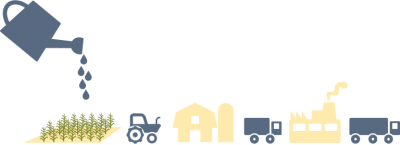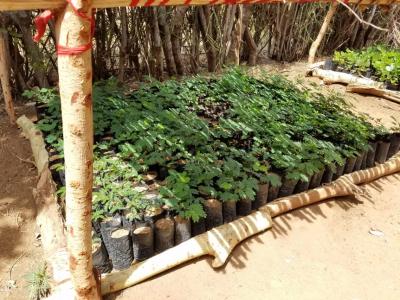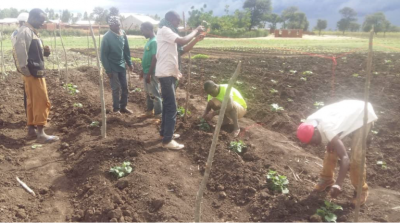Did You Know: The Links Between Food and Water

MICHELLE BRKLJACIC
The link between food and water seems simple – we need water to grow the plants we eat. And sometimes, the relationship is that simple. But more times than not, water is linked to the food we eat in ways we have probably never considered.
Let’s break down a boxed lunch you got for free at a conference. It wasn’t even that good – only a turkey sandwich and a bag of chips.
How much water went into making this boxed lunch? We’ll give you a hint. A lot.
The sandwich had two slices of bread. That’s 22 gallons of water.
There was one slice of cheese. 56 gallons.
Some tomato slices. 8 gallons.
A few pieces of lettuce. 2 gallons.
So far, the sandwich has used 88 gallons of water. We haven’t even considered the water used to produce the fertilizer that went on the field, the grain that fed the turkey, the plastic for the bread bag, the gasoline (remember, ethanol comes from corn) that fueled the tractors and delivery trucks at every step of production, the paper the sandwich was wrapped in, and the list goes on.
With this type of systems-thinking, producing the 1 oz bag of potato chips took 9,691 gallons of water.

We take this seemingly unlimited access to water for granted in developed countries. In many parts of the world, even getting enough water to wash hands and cook food is a real challenge, much less finding water for irrigating crops. Most farmers must rely on rain to water their fields, leading to lower yields and less nutritious crops.
This is especially true in Tanzania, where droughts are frequent and intense. GWI recognizes the crucial links between food and water, and partners with organizations in Tanzania like BM Farm Africa and Trees for the Future to help farmers learn sustainable farming methods that use water as efficiently as possible to provide higher yields and healthier crops.

Planting trees along with row crops helps retain soil moisture, provides nutrients to the soil, and provides shade cover for crops. Additionally, the trees produce fruit that can be eaten or sold at the market, increasing farmer income.

Trellising is a sustainable farming method that increases productivity and reduces the spread of disease among crops. Along with practical farming techniques, BM Farm Africa provides training in principles of agribusiness for small farmers.
GWI will host a Did You Know event in January to showcase projects like these across Tanzania and other countries in East Africa that Ohio State faculty, staff, and students are involved with. Check back soon for more information regarding this event!
References:
water.usgs.give/edu/activity-watercontent.php
waterfootprint.org/en/resources/interactive-tools/product-gallery/
